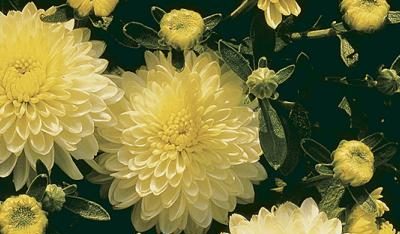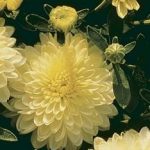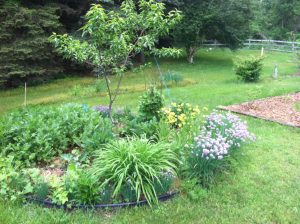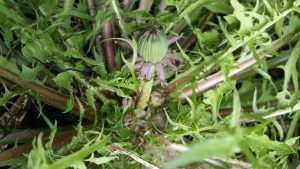While the word permaculture immediately conjures up images of outdoor spaces – rambling gardens, vine covered pergolas, productive vegetable gardens and fruit tree forests – a permaculture design also focuses on the comfort and health inside the home. Designs more often than not will incorporate methods of keeping the home cool in summer, warmer in winter, or even building a new sustainable house where no home currently exists.
Given that people spend more than 90 percent of their time indoors, air quality matters. A variety of toxic compounds can be found in the home, from the use of cleaning chemicals, insect repellents and cigarette smoke, right down to toxins that can be emitted from upholstery and synthetic building materials. Below you will find some information on purifying the air inside your home.
Open your windows and doors
Before we go into the air purifying plants I could not go past this first option which might seem obvious, but in our modern society it seems it is too easy to close up the house and turn on the air conditioner, trapping toxins inside. If your garden has been designed in a way that protects your house from the fiercest of elements then you can open your windows and doors and let in the fresh air!
In 1989 NASA published their “Clean Air Study”. The research was to look at ways to reduce what is known as “sick building syndrome” and to clean the air in space stations, as well as absorbing carbon dioxide and releasing oxygen into the building.
The following plants showed to be effective at removing certain toxins from the surrounding air. I have included in my list those plants which were the top performers when removing these toxins, although many of these plants may have also shown positive results in removing some of the other toxins as well.
Benzene
* Gerbera (Gerbera jamesonii)
* Chrysanthemum (Chrysanthemum morifolium)
* Peace lily (Spathiphyllum ‘Mauna Loa’)
* Warneckei (Dracaena deremensis “Warneckei”)
* Bamboo palm (Chamaedorea seifrizii)
* Red-edged dracaena (Dracaena marginata)
* Variegated snake plant, mother-in-law’s tongue (Sansevieria trifasciata ‘Laurentii’)
Benzene is in cigarette smoke, glue, paint, furniture wax, and detergents.
Formaldehyde
* Bamboo palm (Chamaedorea seifrizii)
* Boston fern (Nephrolepis exaltata ‘Bostoniensis’)
* Chrysanthemum (Chrysanthemum morifolium)
* Dwarf date palm (Phoenix roebelenii)
* Janet Craig (Dracaena deremensis “Janet Craig”)
* Kimberley queen fern (Nephrolepis obliterata)
* Variegated snake plant, mother-in-law’s tongue (Sansevieria trifasciata ‘Laurentii’)
You can be exposed to formaldehyde by breathing it or absorbing it through your skin. It is in cigarette smoke or other tobacco products, and in smoke from gas cookers and open fireplaces. You can also be exposed to formaldehyde if you use unvented gas or kerosene heaters indoors, from household products such as construction materials, latex paints, fingernail polish, cosmetics, disinfectants, glues, lacquers, manufactured pressed wood products, fiberglass, new carpets, permanent press fabrics, paper products, and some cleaners.
Trichloroethylene
* Gerbera (Gerbera jamesonii)
* Red-edged dracaena (Dracaena marginata)
* Peace lily (Spathiphyllum ‘Mauna Loa’)
Trichloroethylene can be found in disinfectants, dyes, perfumes, pharmaceuticals, soaps, and is used in dry cleaning solvents.
Xylene and Toluene
* Peace lily (Spathiphyllum ‘Mauna Loa’)
* Chrysanthemum (Chrysanthemum morifolium)
* Red-edged dracaena (Dracaena marginata)
* Variegated snake plant, mother-in-law’s tongue (Sansevieria trifasciata ‘Laurentii’)
Xylene can be found in many common household products such as paints, lacquers, adhesives, rust preventers, thinners, gasoline, permanent markers, varnishes, and fingernail polish. Toluene is in kerosene, heating oil, paints, lacquers and cigarette smoke.
Ammonia
* Peace lily (Spathiphyllum ‘Mauna Loa’)
* Chrysanthemum (Chrysanthemum morifolium)
* Flamingo lily (Anthurium andraeanum)
Many household cleaning products include ammonia such as glass cleaners, floor waxes, multipurpose cleaners, toilet cleaners, oven cleaners and drain cleaners. Ammonia is also in cigarette smoke.
Chrysanthemum (Chrysanthemum morifolium) and Peace lily (Spathiphyllum ‘Mauna Loa’) were the only plants which showed some effect on reducing all of the air pollutants tested. These plants would be good “all-rounders”.
Permaculture is so much more than just a garden.
Now run outside and create your oasis!
Jo








